Here are the best places, villages, and towns in Montenegro that you can’t miss on your next Balkan travel adventure.
Montenegro is also known as “Crna Gora,” which means Black Mountain – but do not be fooled; it’s not all mountains. In one weekend, you can see a small coastal town, old city walls, an artificial island, and a tiny village next to a fortified village, all in this beautiful country.
- Biogradska Gora
- Black Lake – Crno Jezero
- Budva
- Bukumirsko Lake
- Durmitor National Park
- Gornji Stoliv
- Herceg-Novi
- Karuc
- Kotor
- Kotor Old Town
- Lake Skadar
- Lipa Cave
- Lovcen National Park
- Ostrog Monastery
- Pavlova Strana Viewpoint
- Perast
- Petrovac
- Piva River Canyon
- Plav
- Pržno
- Prokletije National Park
- Savina Monastery
- Stari Bar
- Sveti Stefan
- Tara River Canyon
- Tivat
- Ulcinj
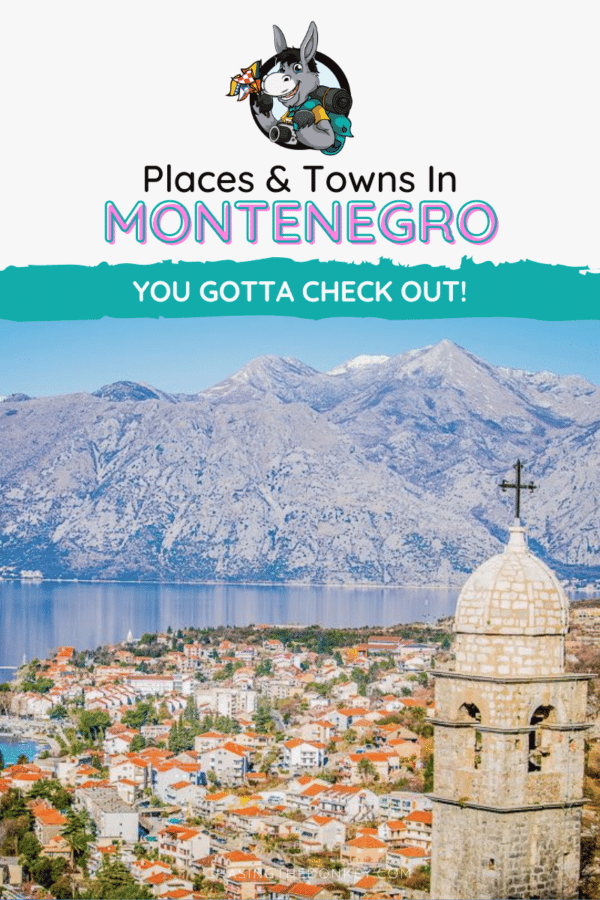
Skip Ahead To My Advice Here!
Towns In Montenegro On The Adriatic Sea
Starting in the historical Herceg-Novi and spanning over 120 km of Adriatic coastline before ending at the multi-religious Ulcinj, Montenegro is known as the land of “A Hundred Stari Grads” (old towns), where you can get lost while climbing its walls, hiking its mountains or enjoying the local gastronomy.
From the picturesque city of Perast, the ancient Stari Bar, and the fairy-tale Kotor, the most eye-popping cities can be found alongside Montenegro’s long coast.
1. Herceg-Novi
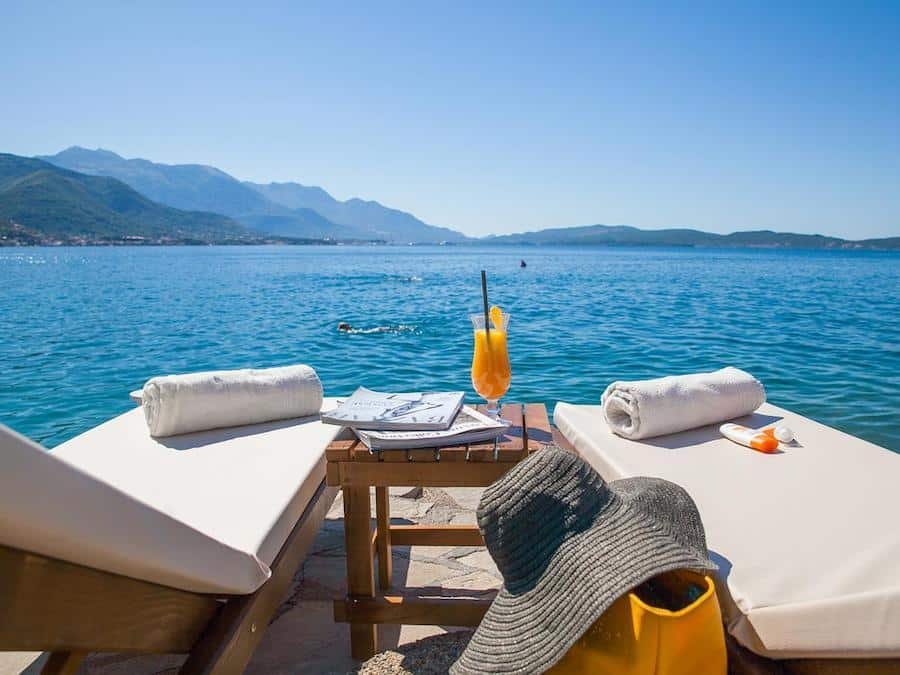
Herceg-Novi is about 50km from Dubrovnik (Croatia) and 40km from Kotor. It was once used as a fortress by the first Bosnian King, Stjepan Tvrko I. Nowadays, it welcomes visitors traveling into Montenegro from the west.
Today, the city is a major tourist destination, and it is well known both as the ‘city of the sun and as a spa and health center, thanks to many sunny days all year round and the abundance of healing sea mud and mineral water springs.
Among its most famous tourist attractions, it is essential to highlight the Forte Mare castle built by the Bosnian king, the Austrian clock tower from the 19th century and the Kanli tower built by the Turks Serbian church St. Michael the Archangel.
It all combines into a great mix of cultures that have been enriching Herceg-Novi since its foundation.
2. Kotor
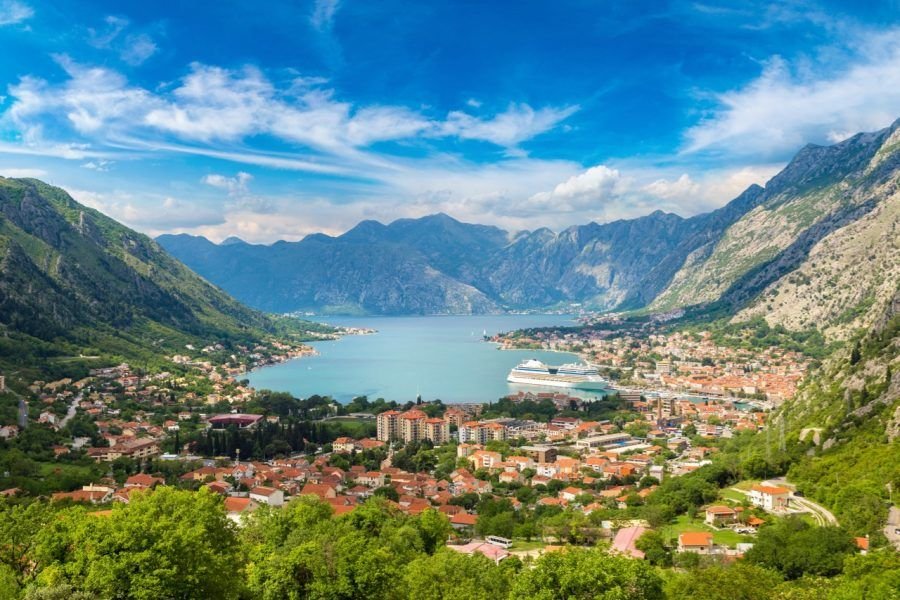
Kotor is situated in one of the most secluded parts of the Adriatic Sea.
It is the southernmost fjord in Europe and is considered the only natural one of its kind in the world.
In addition to its must-visit-old-town, Kotor offers a wide range of activities for every visitor, from hiking the 13km to Krsrac and enjoying the Montenegrin traditional gastronomy in its restaurant on top of wandering through its small port.
One can also organize a day trip to the neighboring Perast or walk up to 15m wide through its fortification.
Kotor, the central Boka Kotorska city from which its name originates, occupies the first position on “the must-see destinations to visit in 2016 worldwide ranking,” according to Lonely Planet.
This comprehensive guide will find the best accommodation in Kotor Bay on any budget.
3. Perast
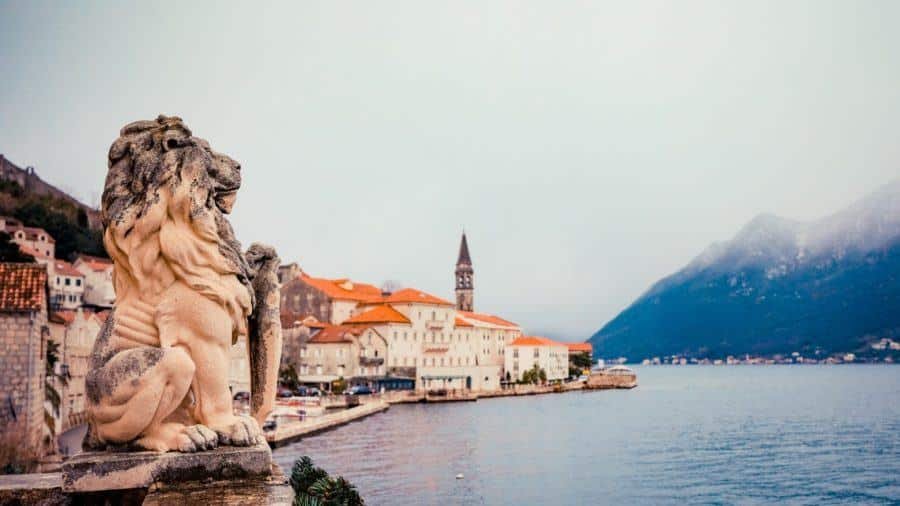
Perast was built between the Adriatic coast and the hills that house the city’s “palazzos” from the Venetian period. More than 16 Baroque palaces, 17 churches, numerous Orthodox structures, and nine defensive towers remain from the past.
Nowadays, Perast holds the distinction of a protected UNESCO World Heritage site, and it is considered one of the most luxurious destinations in Montenegro.
Just a few kilometers from the city of Kotor, it is also the home of the enigmatic “Gospa od Skrpjela” (Our Lady of the Rocks Island), Perast’s most famous landmark, which can just be reached by boat for a 10 euro return trip.
4. Budva
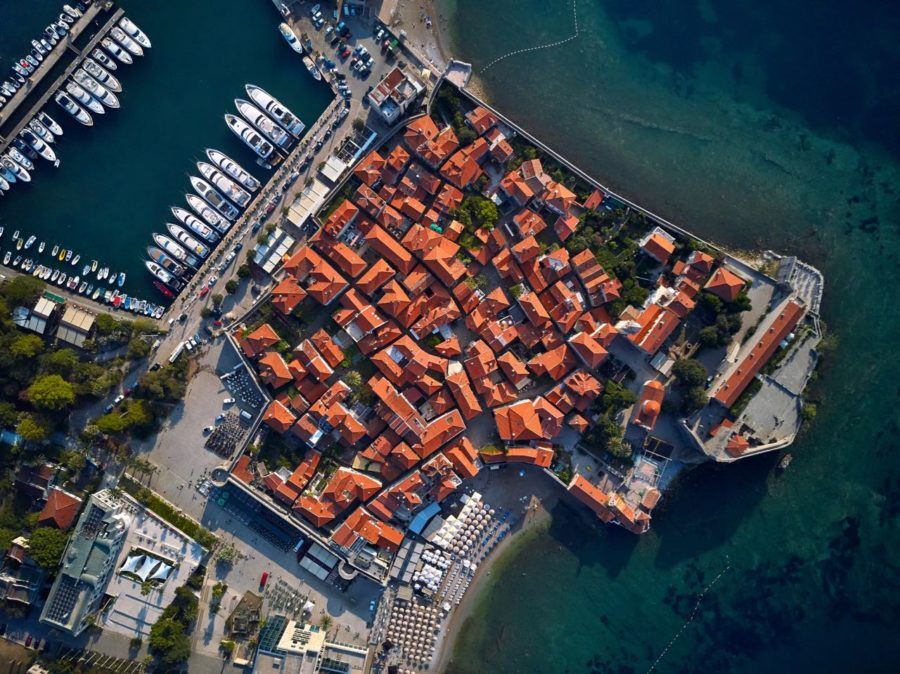
The city, also known as “The Central Europe Jewel on the Crown,” lies south of Montenegro, away from Boka Kotorska.
Founded by the Greeks in the 4th century BC and walled during the Middle Ages, the town is the center of the “Budva Riviera,” relating to the city’s name.
Budva is considered one of the liveliest cities in Montenegro due to its nightlife, water activities, clubs, and summer resorts. However, its major highlight is the wall that encircles the old town. Its Stari Grad was originally an island but ended up joining the city of Budva after years of natural sedimentation.
Moreover, its white-sandy beaches with crystal waters are considered one of the most beautiful in the world.
5. Ulcinj
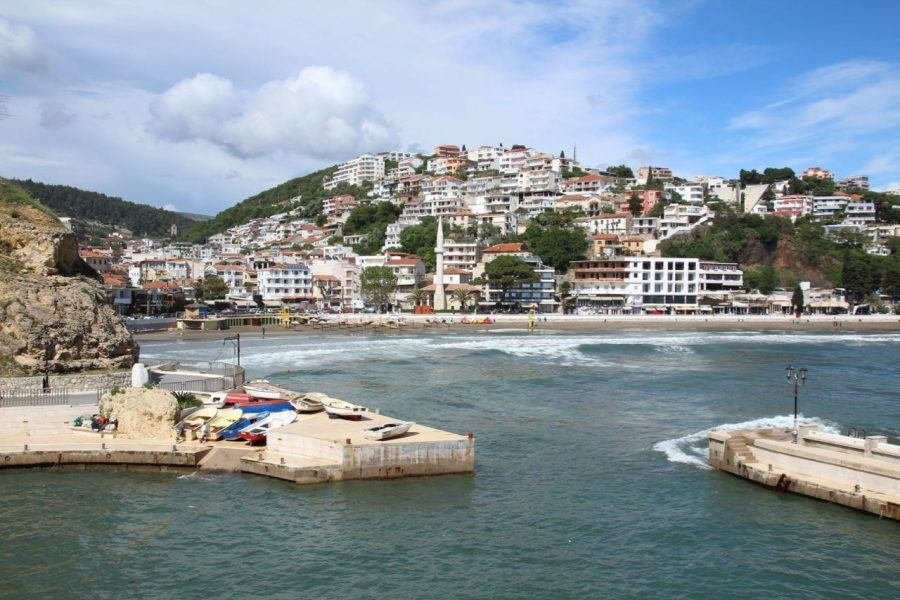
Ulcinj claims to be the most culturally diverse city in Montenegro. It was recognized as one of the oldest settlements and the pirate capital of the Adriatic Coast.
Near the Albanian border, it’s hardly surprising that more than 70% of its inhabitants are ethnically Albanian. The city also homes the biggest Muslim population percentage in the country.
Ulcinj has been a historical mix of cultures and religions. The Romans once captured it and later became part of the Byzantine Empire before becoming part of the Republic of Venice in 1405 and the Ottoman Empire afterward.
Nowadays, all churches, mosques, Montenegrins, and Albanians live together in this hilled city of 12,000 inhabitants.
Ulcinj is also the location of the country’s longest white sandy beach – Velika plaza, which spans 12 kilometers.
Brands We Use And Trust
6. Stari Bar
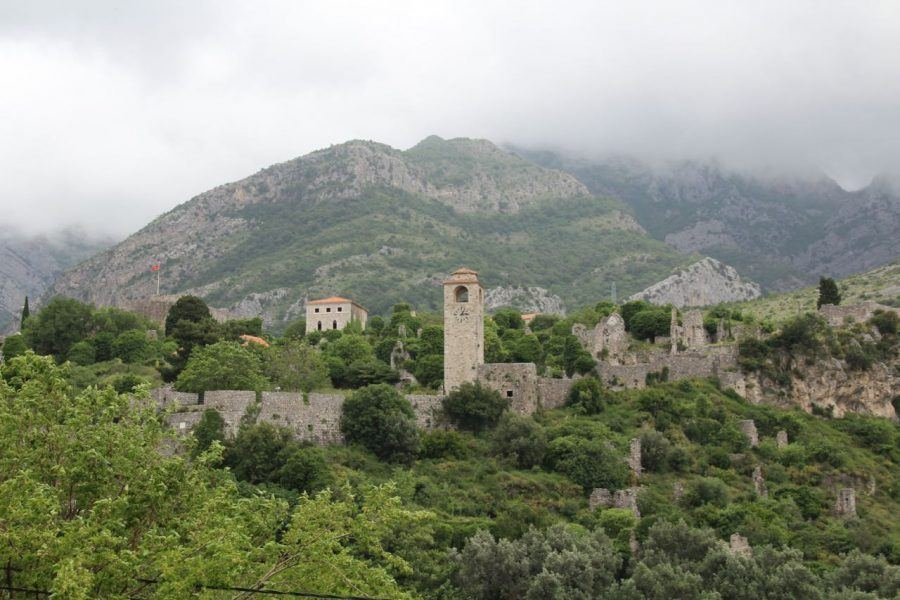
Located about an hour’s walk up at Rumija Mountain is the unique old town of Bar. Although the old village has never been restored after an earthquake in 1979, they try to bring it back to its glory days.
Stari Bar is described as the largest medieval archaeological remains in the Balkans. Today, it is an open-air museum surrounded by trendy souvenir shops and awarded restaurants where you can relax after a long walk exploring its old history.
7. Sveti Stefan

Defined as the “70’s Adriatic playground for the rich on a hilly peninsula and barely connected to the mainland” by Condé Nast Publications, Sveti Stefan, once a fishing village, changed its purpose in 1950.
A short drive southeast of Budva, the village houses one of the most iconic and photographed old towns in Montenegro. Unfortunately, the whole “Stari Grad” today belongs to a private hotel chain, the Aman Sveti Stefan, and the entrance is forbidden, that is, unless you are a hotel guest.
8. Tivat

Tivat is located in the central part of Kotor Bay and south of Mount Vrmac, where you can enjoy the best view of the bay.
Tivat is recognized as one of the top nautical centers in the Adriatic, primarily thanks to the new Porto Montenegro – a modern Marina built to accommodate the most luxurious yachts and the country’s most exclusive naval clubs.
Leaving luxury aside, one thing that cannot be missed is the day trip to Gornja Lastva rural village, 3 km away from Tivat. It dates from the XIV century, set on the sunny slope of Vrmac hill, with a magical panorama of Tivat Bay and surrounded by olive groves.
Once a farmer’s village but now a tourist attraction, its houses are built of stone and hidden in wild Mediterranean vegetation.
The community welcomes its increasing number of visitors with the background sound of the olive mills.
9. Petrovac
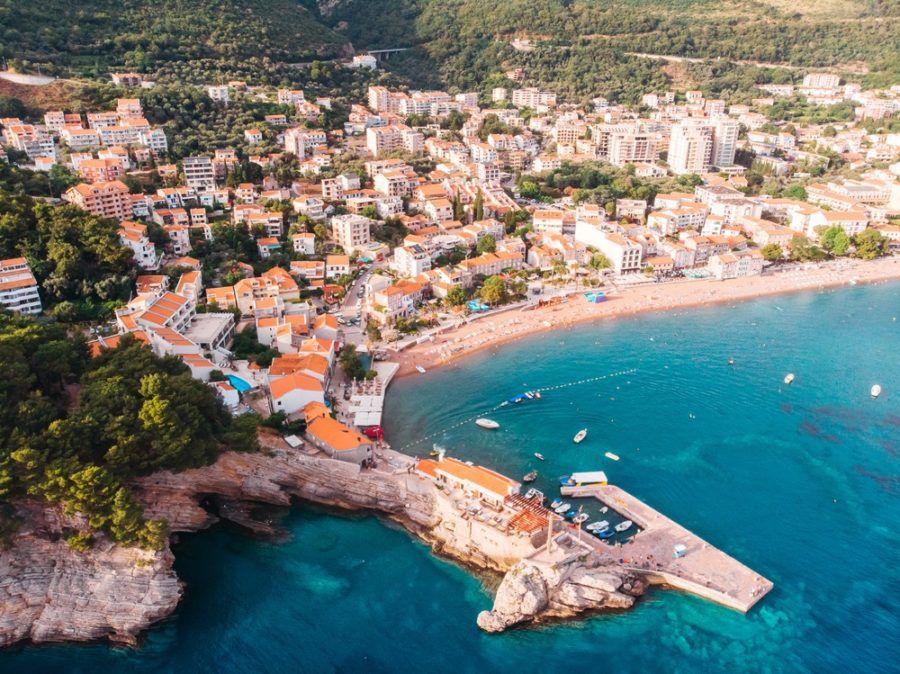
Located on the beautiful Montenegro coast, roughly in the middle between Budva and Bar, Petrovac is a lovely town that’s a bit calmer and quieter than other coastal towns in Montenegro. This small-ish town features the red-roofed houses typical of this part of the Mediterranean and has a beautiful 600-meter-long sand beach. With crystal-clear shallow water, it’s perfect for children. As such, Petrovac is a popular tourist destination.
There’s also a wonderful seaside promenade lined with eateries and cafes. Grab a Turkish coffee and do some people-watching, or indulge in freshly caught fish and seafood dishes.
10. Pržno
A tiny fishing village just east of Budva, Pržno is one of the many beautiful places on the Montenegro coast that make the Budva Riviera so famous. This historic village has become a tourist destination, although plenty of old stone buildings still offer some counterweight to the modern seaside resorts.
An incredible family-friendly sand beach attracts sunbathers and swimmers. Simultaneously, the village’s extensive selection of restaurants will please anyone who enjoys a delicious meal prepared with the freshest ingredients. From Pržno, a fantastic walking path leads to Sveti Stefan.
11. Biogradska Gora

One of the most beautiful places in Montenegro, Biogradska Gora, houses the pristine Lake Biograd, which is surrounded by ancient forests and rugged mountains. This is the perfect place for nature lovers to witness a diverse range of flora and fauna.
12. Black Lake (Crno Jezero)
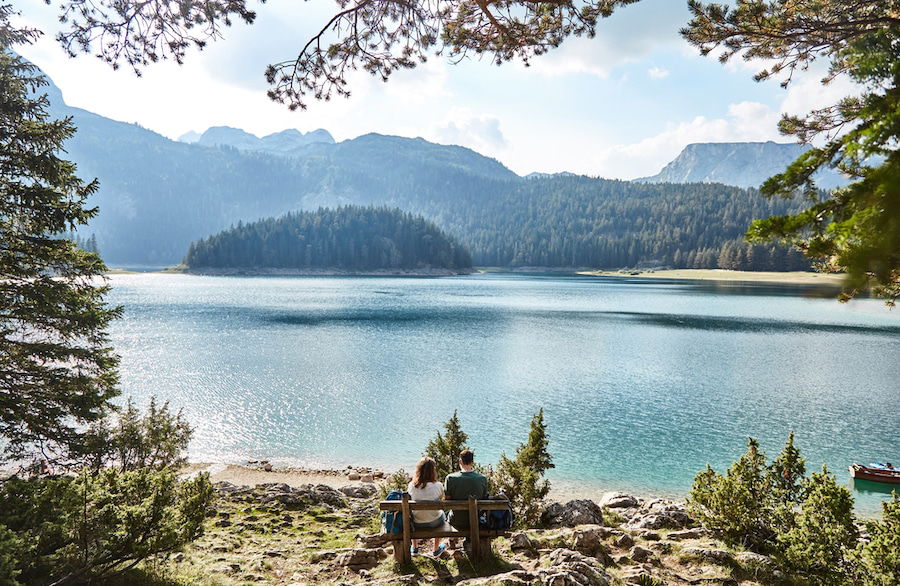
Nestled in the heart of the Dinaric Alps, this glacial lake provides breathtaking views and is a popular destination for those seeking serenity. A boat trip on its blue waters during the summer months offers an unforgettable experience.
13. Bukumirsko Lake & The Komovi Mountains
High mountains cast shadows over this picturesque town. This region is a haven for trekkers looking for spectacular views and fresh mountain air.
14. Durmitor National Park
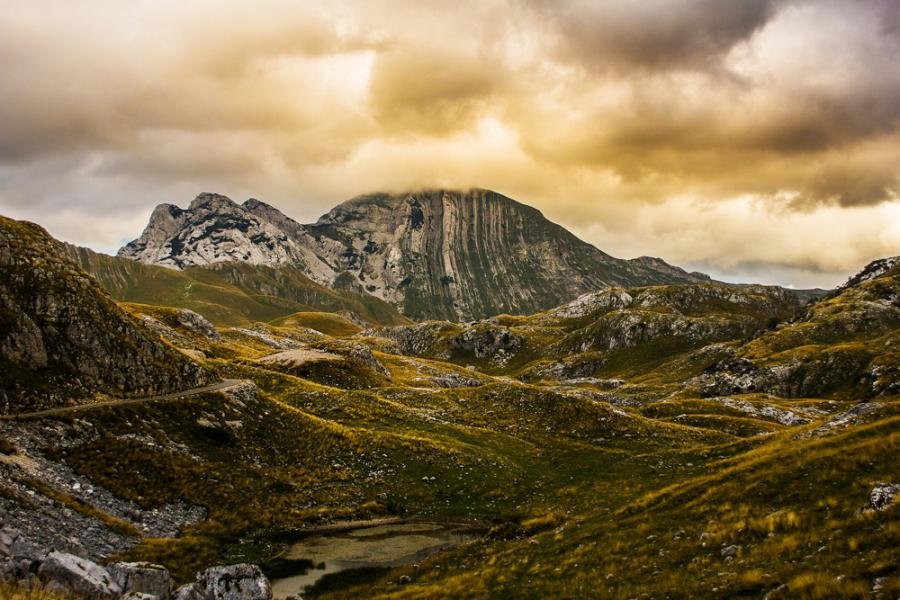
Situated in the heart of Montenegro, Durmitor National Park is not just any ordinary national park; it’s a natural marvel waiting to be explored.
You’ll find the renowned Tara River Canyon at the center of the park. Imagine the deepest canyon, so vast and deep that it holds the title of the deepest in all of Europe!
But the allure of Durmitor doesn’t stop there. Looming high peaks beckon climbers and trekkers alike while the park’s glacial lakes shimmer, reflecting the sky and surrounding terrain. If you’re an avid hiker, the park’s trails will lead you through landscapes that change from dense forests to open meadows, ensuring never-dull moments.
For those who are more water-inclined, the lakes provide a fantastic spot for a range of water sports. Think kayaking, paddle boarding, and even some chilled-out fishing. And hey, even if you’re just in for a leisurely day, the vistas alone are worth the trip. It’s nature, raw and unfiltered, paired with just the right dose of adrenaline.
15. Gornji Stoliv
Tucked away in Montenegro’s picturesque coast lies Gornji Stoliv, a spot that might just become your favorite hideaway.
It’s not just another village; Gornji Stoliv is like stepping back in time. As you meander through its narrow streets, you’ll be greeted by stone walls and houses that tell tales from the 15th century.
The vibe here? Think old-world charm mixed with a serene coastal ambiance. And while you’re soaking up the local history, don’t forget to venture to the neighboring towns.
They, too, carry stories and architectural gems from bygone eras. If you’re a fan of places that combine natural beauty with a rich past, Gornji Stoliv is a must-visit. Whether you’re looking for a quiet afternoon stroll, some local insights, or a charming spot to unwind by the sea, this village checks all the boxes.
16. Karuc
When you think of Montenegro, bustling towns and scenic mountains might come to mind. But let me introduce you to Karuc, a slice of tranquility that’s often overlooked.
Set on the serene banks of Skadar Lake, this fishing village captures the essence of a slow-paced life harmoniously intertwined with nature. As you approach, you’ll notice small boats gently swaying with the rhythm of the water, each with its own story of the day’s catch or a leisurely row across the lake.
And if you’re a food enthusiast, you’re in for a treat! The local restaurants here aren’t just about dining; they offer an experience. Imagine savoring the freshest fish caught just hours before as you overlook the calm waters.
It’s simplicity but at its finest. For those looking for an escape from the usual tourist spots and a chance to truly connect with Montenegrin culture and nature, Karuc is your go-to. Whether it’s a weekend retreat or just an afternoon visit, this village promises relaxation and genuine local flavors in every sense.
17. Lake Skadar

Have you ever wondered where birds take a break on their global tour? Enter Lake Skadar National Park, tucked within its namesake national park.
Not just a regular stopover but a significant hub in the world of migratory birds. It’s not every day you get to be in one of the largest “cities” for these winged travelers.
Watching flocks trace patterns against the sky or listening to their melodic calls is an experience in itself. But to truly grasp the magnitude and allure of Lake Skadar, hop on a cruise. As you glide over its waters, you’ll get panoramic views of its expanse, fringed by verdant landscapes and dotted with historical monuments.
It’s the kind of great place that warrants more than a quick glance. You’ll be tempted to linger, maybe even kayak, or try bird-watching. After all, with its unique blend of natural splendor and rich biodiversity, Lake Skadar offers both relaxation and adventure.
18. Lipa Cave
Venturing beneath the surface of Montenegro, you’ll find Lipa Cave, a treasure trove for those with a penchant for the mysterious and the ancient. This isn’t just any cave; it’s a labyrinthine journey through chambers and corridors adorned with intricate formations.
Guided tours through the cave allow you to weave through its meandering pathways while learning about the natural processes that sculpt this underground marvel.
And let’s not forget the cool reprieve it offers from the summer heat above!
19. Lovcen National Park
Set your sights high, quite literally, at Lovcen National Park. Here, the landscape rises to meet Montenegro’s pinnacle, its highest peak, setting the stage for some truly awe-inspiring panoramas.
But it’s not just about the elevation; it’s what you see from up there. Gaze out, and you’re treated to a breathtaking tableau of the Montenegrin coast, with its glittering waters and picturesque towns extending out to the horizon.
And the best part?
The journey to these views is as thrilling as the destination. With a network of hiking trails winding through dense forests and open meadows, the park beckons adventurers and nature lovers alike. Whether you’re tackling the summit or taking a leisurely stroll, there’s a path for every pace.
20. Ostrog Monastery

Picture this: a monastery, not on a hilltop or in a serene valley, but literally carved into the face of a sheer cliff. That’s Ostrog Monastery for you.
Established in the 17th century, this architectural wonder seamlessly blends the baroque style with the ruggedness of its rocky home. But beyond its structural marvel, Ostrog offers visitors a unique spiritual ambiance.
Whether you’re on a personal pilgrimage or just curious about its history, the monastery welcomes all with open arms. As you ascend towards it, there’s a palpable sense of peace, complemented by the panoramic vistas of the surrounding valley. Inside, the sacred relics and frescoes further accentuate the monastery’s significance as a place of worship and reflection.
And, let’s be honest, how often do you get to visit such an interesting place that’s as much about its spiritual essence as its jaw-dropping location?
21. Pavlova Strana Viewpoint
Ever wondered where you can get a bird’s-eye view of nature’s geometry in action? Pavlova Strana Viewpoint is the answer.
Set high above the sprawling expanse of Skadar Lake, this vantage point lets you appreciate the lake’s unique topography, mainly the mesmerizing curve of the narrow isthmus bridging two vast lake sections. It’s like watching nature sketch out one of its finest designs.
Photographers, get your cameras ready because the play of light on water, especially during sunrise and sunset, makes for postcard-perfect shots. But it’s not just for the shutterbugs; anyone seeking a moment of tranquil reflection will find it here.
The gentle breeze, the distant ripples on the water, and the vast open sky overhead create a serene ambiance. And if you’re touring the area, make sure to stick around a bit. Nearby spots and local eateries offer a chance to delve deeper into the region’s charm.
22. Piva River Canyon
There’s something inherently humbling about standing at the edge of Piva River Canyon. As you gaze into its depths, you’re reminded of nature’s sheer power and beauty.
The canyon, with its towering cliffs draped in verdant greenery, stretches out as far as the eye can see, making for a sight that’s both exhilarating and soothing. For adventurers, the canyon is a playground waiting to be explored.
Whether it’s rafting down the Piva River, with its clear waters reflecting the sky, or hiking along the cliffside trails, there’s an adventure for every thrill-seeker. Yet, even if adrenaline rushes aren’t your thing, the Piva River Canyon doesn’t disappoint. Picnic spots abound, allowing families and friends to enjoy a day surrounded by nature’s magnificence.
23. Plav
Nestled by the banks of the Lim River, Plav offers a charming blend of scenic beauty and vibrant local culture. With its picturesque backdrop of rolling hills and clear river waters, the town effortlessly draws you into its leisurely pace.
But it’s not just about taking in the views; Plav’s main square is where the action is. Day in, day out, it bustles with life. Locals converge here for their daily catch-ups, kids dart about playing games, while tourists blend in, savoring a coffee at a streetside café or indulging in local treats from nearby stalls.
And if you’re the curious type, a stroll around will unveil little pockets of history and culture, from age-old buildings to artisanal shops selling handcrafted goods. Plus, with the Lim River at its doorstep, water activities are easily accessible.
24. Prokletije National Park
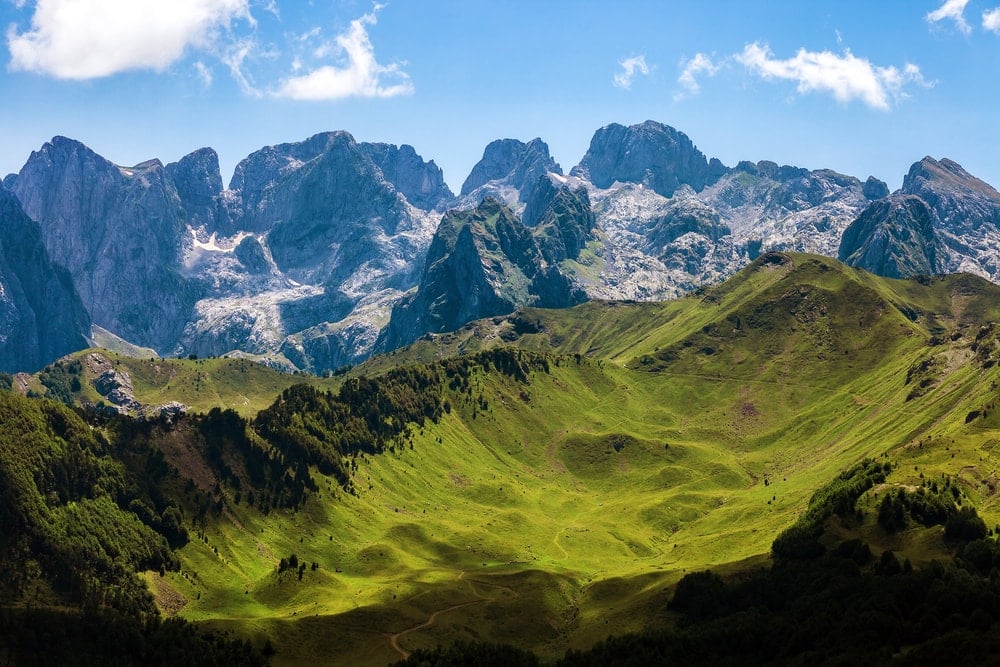
Set against the backdrop of the majestic Dinaric Alps, Prokletije National Park stands as a testament to the raw beauty of Montenegro’s landscape. If you’re someone who feels the call of the mountains, this place is your playground.
The park’s diverse terrain, ranging from towering peaks to lush valleys, offers various trails suited for seasoned trekkers and casual wanderers. As you hike through, you’ll be greeted with panoramic views that, quite frankly, look like they’ve jumped straight out of a postcard. But it’s not just about the vistas; Prokletije is also teeming with biodiversity, making it a hotspot for nature lovers.
Birds, mammals, and unique alpine flora — there’s always something new to spot. And if you’re up for a bit of cultural exploration, the park and its surrounding areas house pockets of local communities where traditions are kept alive, and hospitality is second nature.
Oh, and drop by a local eatery, and you’re bound to be served dishes that have been passed down generations.
Move This Adventure To Your Inbox & Get An Instant Freebie

No spam. Unsubscribe at any time.
25. Tara River Canyon
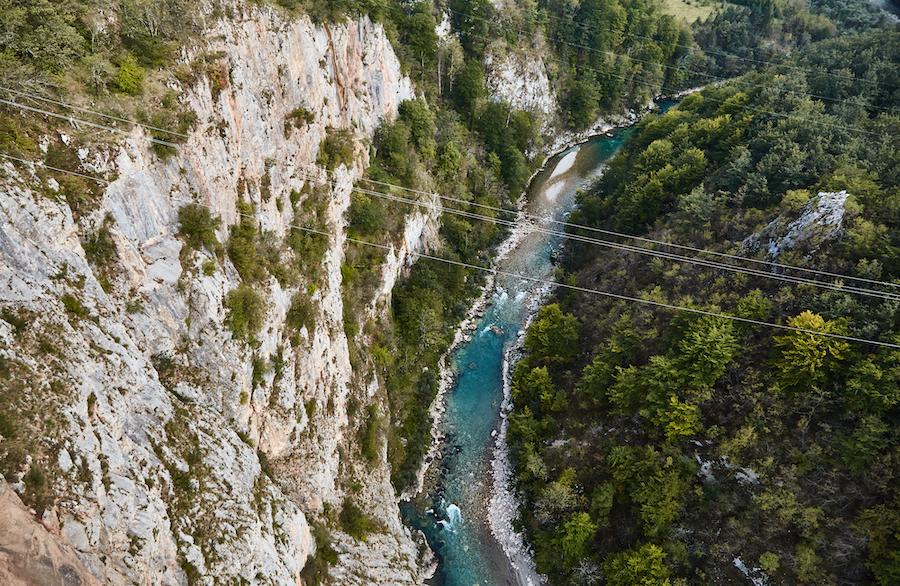
Set against the backdrop of the majestic Dinaric Alps, Prokletije National Park stands as a testament to the raw beauty of Montenegro’s landscape.
If you’re someone who feels the call of the mountains, this place is your playground. The park’s diverse terrain, ranging from towering peaks to lush valleys, offers various trails suited for seasoned trekkers and casual wanderers.
As you hike through, you’ll be greeted with panoramic views that, quite frankly, look like they’ve jumped straight out of a postcard. But it’s not just about the vistas; Prokletije is also teeming with biodiversity, making it a hotspot for nature lovers. Birds, mammals, and unique alpine flora — there’s always something new to spot.
Keep Exploring Montenegro
What are some must-visit cities in Montenegro?
Montenegro is home to several enchanting cities worth exploring, including Kotor, known for its stunning bay and historic old town; Budva, famed for its medieval architecture and vibrant nightlife; and Tivat, a coastal town renowned for its luxurious marina. Each city offers a unique blend of natural beauty and cultural richness.
What can I explore in Montenegro’s old town areas?
Exploring a Montenegro old town like the ones in Kotor and Budva allows you to step back in time. These historical areas boast well-preserved medieval architecture, quaint cobblestone streets, and charming squares where you can immerse yourself in the local culture, enjoy traditional cuisine, and partake in vibrant festivals.
Can you recommend smaller towns to explore besides the main cities in Montenegro?
Absolutely, besides the well-known cities in Montenegro, smaller towns like Perast, Savina, and Plav also offer delightful experiences. Perast is celebrated for its baroque architecture and proximity to Our Lady of the Rocks island. Savina is noted for the Monastery of Savina, while Plav charms visitors with its serene lake and picturesque surroundings.
What coastal towns in Montenegro offer a combination of beach and history?
Towns like Budva and Herceg Novi provide a splendid mix of beautiful beaches and rich history. Budva is renowned for its vibrant nightlife and medieval old town. At the same time, Herceg Novi greets travelers with fortresses, botanical gardens, and a tranquil seafront promenade, offering varied experiences against the backdrop of the Adriatic Sea.
Are there any cultural and historical insights specific to Kotor?
Kotor, one of the prominent cities in Montenegro, is steeped in history and culture, particularly visible within the robust walls of its old town. Recognized as a UNESCO World Heritage site, Kotor Old Town hosts landmarks such as the Cathedral of Saint Tryphon and numerous palaces, offering a rich exploration of Montenegro’s past and vibrant present.
Okay, so tell us – which towns in Montenegro will you explore first?
- Guide To National Parks In Montenegro
- Best Things To Do In Budva
- Things To Do In Montenegro
- Things To Do In The Bay Of Kotor
- Best Beaches In Montenegro
- Fun Facts About Montenegro To Help Plan Your Travel
- Lake Skadar Montenegro: Exploring the Balkans’ Largest Lake
- The Bay of Kotor Montenegro Will Blow Your Socks Off – Here’s Why
- Buying A SIM Card In Montenegro
- Check Out Montenegro In Winter
- Things To Do In Montenegro For Every Type Of Traveler
- Fun Things To Do In Podgorica
- Durmitor National Park Hiking Adventures in Montenegro
- Bar To Belgrade Train

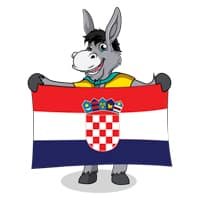
Wow … Piękne miejsce !
Indeed <3
Let’s goooooo!!!! Please xxx
Nice Town in Montenegro!
Random photos while docked in Bar, Montenegro – medieval, cozy and beautiful
Just wonderful!